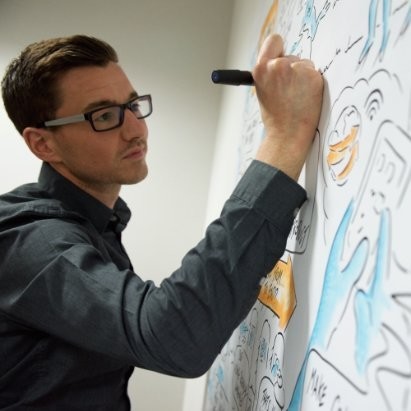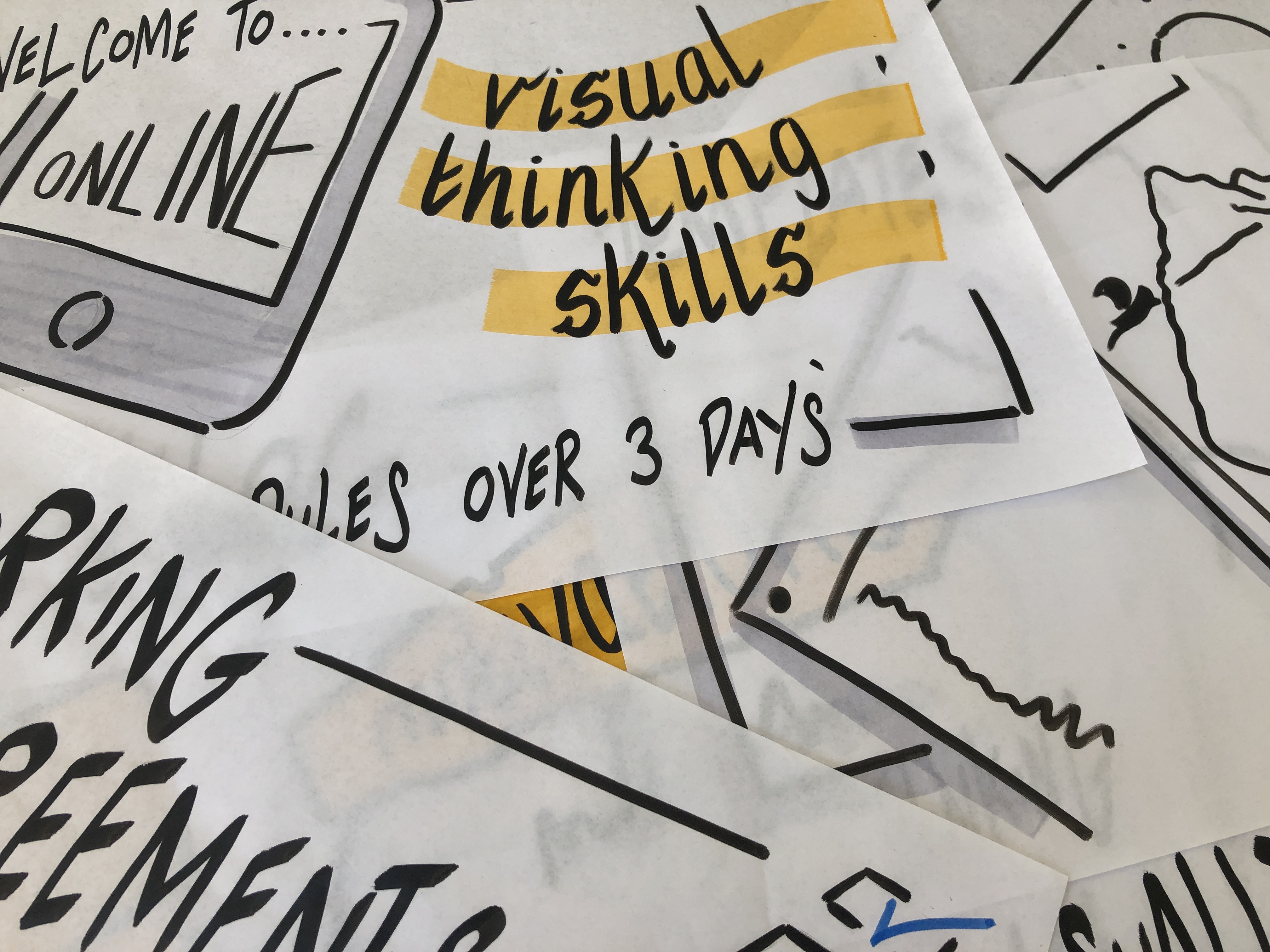
Humans have been learning and exposing thoughts through images for thousands of years. Since the early beginning of humanity, Visual Thinking has been part of our life. As from the moment we are born, we have the basic skill to show the world how we feel, what we are thinking and why. This basic drawing skill can be considered a very valuable skill, not only in our childhood, but also later on in our professional life. After all, words aren’t the only tool to explain an idea. To learn more about the power of Visual Thinking, we talked with Business Visualiser Stuart Young from Radtac. What is Visual Thinking and how can we benefit from a visual approach during the COVID-19 crisis and beyond?

“Absolutely! Firstly, it’s important to move away from theories such as left brain or right brain thinking when discussing the power of Visualisation. When I talk about visualisation and visual thinking I’m really talking about visual literacy.
As children we are often introduced to literature in the form of picture books and learn how to associate the pictures with meaning by navigating the pictures on a page way before we learn to read and write. So when we refer to visual thinking we are describing our ability to interpret, comprehend, and express ideas by using or creating visuals."
“Regardless of industry or the purpose for a facilitated meeting, visualisation will assist individuals and teams to learn fast, feel more engaged in the learning and retain information more effectively. With past experience of working within social care where I supported adults with learning disabilities and more recently running experiments at local primary schools, it is clear that Visualisation provides a higher level of clarity than the written word alone."
"Dave Sibbet, founder and CEO of Grove Consultants in San Francisco and a guru in visual facilitation once said ‘a good picture will extend the retention of group memory’. Visual Thinking provides a teacher with the opportunity to accelerate learning, engage with the audience, engage with students, and help them to extend memory of what they have been learning.”
“Everyone! At Radtac, we support organisations in being customer focused, in incorporating innovation, applying methods of Design Thinking and adopting Agile ways of working. Regardless of method or framework, visualisation will enhance team collaboration by offering fast feedback."

"Take Scrum (the most commonly adopted Agile framework) for example. Scrum is a process framework within which teams can deal with complex adaptive problems and this is where visualisation can play a significant role. In a VUCA (Volatile, Uncertain, Complex and Ambiguous) world, visualisation will simplify complexity, make the intangible tangible, and the invisible visible. As conceptual thinkers in every situation, in every environment, in every part of life, in every business, there is a need to conceptualise what we are talking about, to find that level of alignment. There are no boundaries when it comes to which industry benefits the most from Visual Thinking. Manufacturing, education, social care, military, training, everyone can benefit from visual practices.”
“First, the key message of visualisation is accelerating learning and assisting teams to collaborate effectively. It doesn’t matter whether you’re face-to-face or virtual. My preference would always be face-to-face. But in order to support online learning and effective collaboration in an online virtual environment, I use a lot of Legamaster materials, next to digital tools like Mural and Zoom."
"In fact, I use the Legamaster Magic-Chart materials as I would be doing in a face-to-face setting. Magic-Chart allows me to co-share, rearrange and cluster information. This makes it a super powerful tool in helping create an environment, whether offline or online, where teams can embrace diversity of thought and convergent thinking.
When participants are drawing and sharing ideas, providing structure to a flipchart or an online tool, Magic-Chart Notes are a great way to dock down those ideas, cluster and rearrange. Also in an online setting we will need a creative set-up, whereby you are tangibly touching and playing with materials, while people are watching.“
"I think the training materials really matter. Without the right environment, the right conditions, learning will be difficult. One of the values of the Agile Manifesto is ‘individuals and interactions over processes and tools’ and I truly believe that. But you do need to think about the learning situation. You do need to create the right process, the right environment, you do need to think about how you can create this environment. People, trainers and coaches need to jazz it up, making a session engaging, interactive, and memorable.”
“That is a lovely question. Basically it’s all about the experience and the interaction you have with people in your class. It’s all about people feeling safe, safe to learn and safe to share ideas and that’s really important. Everything needs to be done on trust, and I love it. If I stand in front of a group of people and make them feel comfortable, safe, and included, then I have succeeded. That’s what makes me happy.”
“In a time of disruption, never has it been more critical to embrace distributed innovation and to work more visually. Making use of virtual tools and visual thinking, individuals and teams can embrace diversity of thought and convergent thinking and innovate their way out of a crisis.”